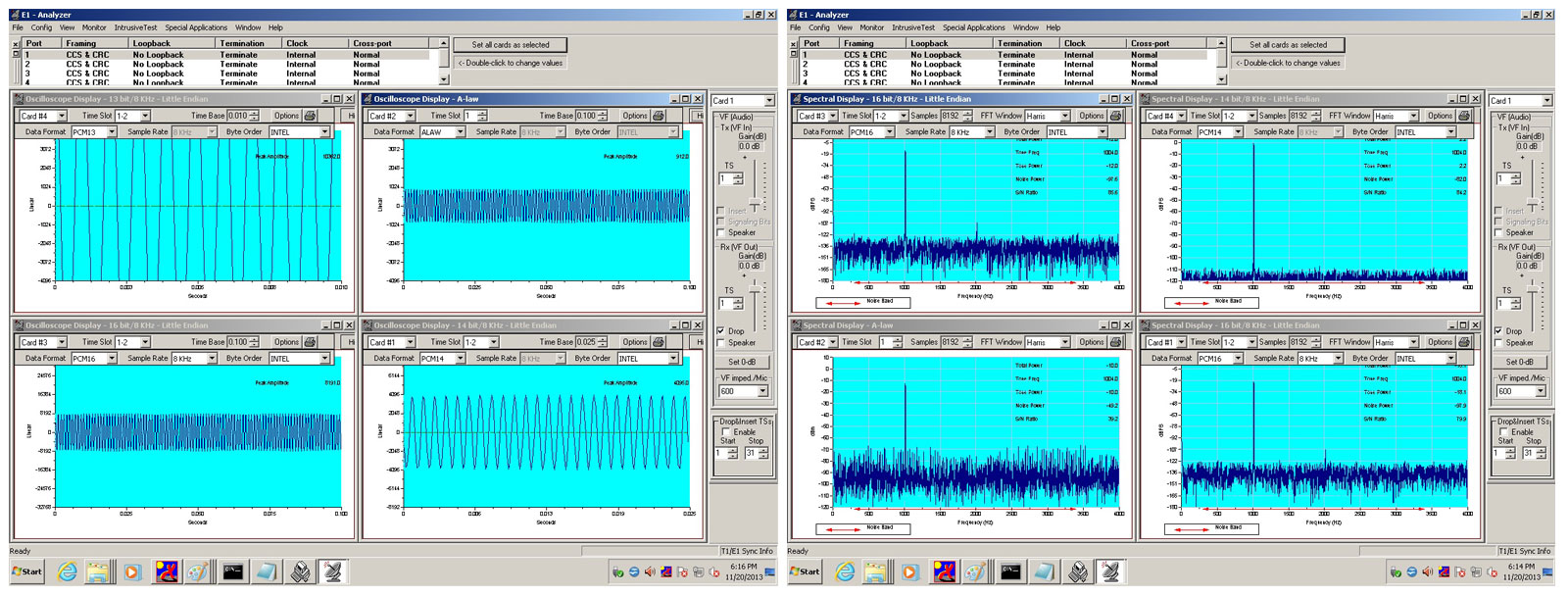GL Announces Oscilloscope and Power Spectral for T1 E1 Audio Applications
Gaithersburg, Maryland, USA – November 22, 2013- GL Communications Inc announced today its enhanced Oscilloscope and Power Spectral for T1 E1 Audio Applications.

Speaking to reporters, Mr. Vijay Kulkarni CEO of the company said, "Oscilloscope and Power Spectral visuals of analog signals within timeslots is a great way to gain an intuitive understanding of the signals being carried by the timeslots. These features have been standard with GL's T1 E1 platforms for 8 kHz, 8 bit, ulaw and Alaw encoded signals. We have enhanced the features to include higher sampling rates and wider codeword lengths."
He added, “Oscilloscope can be used to visually assess activities on the channel such as noise, tone, speech, etc. The PCM codes (amplitude of the incoming signal) of selected timeslot(s) are displayed in real time graph as a function of time. Timeslot selection and time base can be changed either to view different timeslots or modify the duration of the display. The time base can be adjusted from approximately 0.005 sec full scale to 1.000 sec full scale. The data may be displayed for all signaling formats – Alaw, ulaw, pcm16, pcm13, pcm14, pcm8, and different byte orders INTEL (Little Endian), and MOTOROLA (Big Endian).
With the help of Sepctral Display, the data received on a specified timeslot can be viewed in the spectral domain (spectral amplitude Vs frequency). A Fast Fourier Transform (FFT) is applied to successive sample sets of the incoming data and displayed graphically. Available option to adjust the frequency resolution based on the FFT length is (from 32 points to 8192 points). The data can be smoothed to lessen the effects of truncation by applying Hamming, Hanning, Harris, Blackman, Triangular, or Rectangular filter windows.”
Mr. Kulkarni further added, “The enhancements introduced to Oscilloscope and Power Spectral Display applications include options for displaying all signaling formats – A-Law, Mu-Law, PCM 16 bit, PCM 13 bit, PCM 14 bit, PCM 8 bit and different byte order for INTEL (Little Endian) and MOTOROLA (Big Endian) 16 bit signals sampled at 16 KHz can also be displayed. The computations such as S/N ratio, frequency and different power values corresponding to signals of different formats have also been updated.”
 Back to Press Releases Index Page
Back to Press Releases Index Page